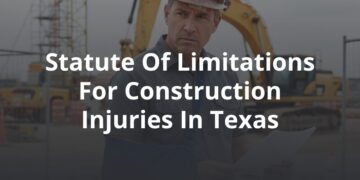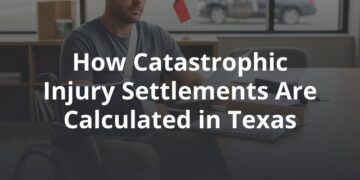Many different laws vary by state, and the law of negligence and personal injury is no exception. In terms of car accidents and laws regarding insurance, some states are “no-fault” states, while others have “at-fault” laws in place.
Texas is an at-fault state when it comes to car accidents; specifically, it is a “comparative fault” jurisdiction. This means that any driver who is completely or partially — at least 50 percent — at fault for an accident has to take responsibility.
Texas law requires drivers who use the state’s roads to purchase insurance and show proof of the same. This is to protect both you and other motorists on the road, by providing coverage in case of liability in an accident. The minimum coverage required in Texas is $30,000 in bodily injury coverage per person ($60,000 per accident) along with $25,000 in property damage coverage.
No-Fault States, At-Fault States, and Partial-Fault Liability: What’s the Difference?
In a no-fault state, drivers are required to have a mandatory personal injury protection policy, based on the minimum insurance required by the state’s statutes. An injured party will first file a claim through their own insurance company, even when the other party is clearly the reason for the accident. To recover for your damages in a no-fault state, proof of fault is not necessary.
Typically, in a no-fault state, the injured party will only be able to sue the party that caused the accident if their own insurance policy limits exceed their damages — for example, if they have suffered severe injuries and amassed significant medical expenses.
By contrast, an at-fault state like Texas allows you to sue the other party who caused the accident and recover for your injuries. The insurance carrier of the person who was at fault will be responsible to pay out your claim. You will not have to file a claim with your own insurance company — a provision that can sometimes help avoid an increase in policy premium rates. Should your damages exceed the limits of their policy, you may be able to sue the driver for negligence and recover the difference.
Partial fault liability is another concept used in Texas tort liability law. According to partial fault liability (also known as comparative fault liability) if both parties contributed to the accident, then the injured party’s recovery may be reduced as a result. For example, let’s say you were involved in an accident in which the other driver ran through a red light and smashed into your vehicle. Clearly they were the main cause of the accident; however, what if you were also breaking the law, like if you were speeding? In this case, your recovery may be reduced due to your own fault liability.
How much that reduction typically depends on the level of fault of each party. In the example above, for instance, let’s say the first driver is found to be 75 percent liable for the accident, with the second driver being 25 percent liable. Under comparative negligence such as the law of Texas, the first driver would not recover, because they were more than 50 percent liable for the accident. Meanwhile, the second driver would be able to recover 75 percent of their damages in a negligence suit — so, for instance, if their damages totaled $50,000, then they would recover $37,500.
How Do You Prove Fault?
The question of fault is not only a question of law but also a question of fact. To prove that the other party was at fault, you will need to rely on evidence that works to prove liability. Photographs, video, phone records, documents, crash reconstruction reports, police reports, and witness testimony are just some of the examples of evidence that can help prove fault liability.
In addition to fault, you will also need to prove damages to recover in a negligence claim. This process entails proving the extent of your injuries, such as by submitting medical documentation and associated medical, hospital, and pharmacy bills. It might also involve submitting proof of any lost income, as well as proof of damage to your personal property, such as repair bills for the damage sustained to your vehicle.
Fault liability is often a quite involved and complicated matter. Not only can Texas at-fault accident laws be confusing, but also many facts need to be considered in determining liability by each party. Contacting a knowledgeable and experienced personal injury attorney can make a big difference in being able to state a successful case.
How Can FVF Help?
If you have suffered injuries in a car accident we will work with you to explore your options and discuss the legal process for negotiating a settlement and filing suit. FVF wants victims of car accidents to be equipped with the knowledge they need to make decisions about what is best for them, regardless of pressure from insurance companies. Contact our car accident lawyers for a free consultation about your case.





